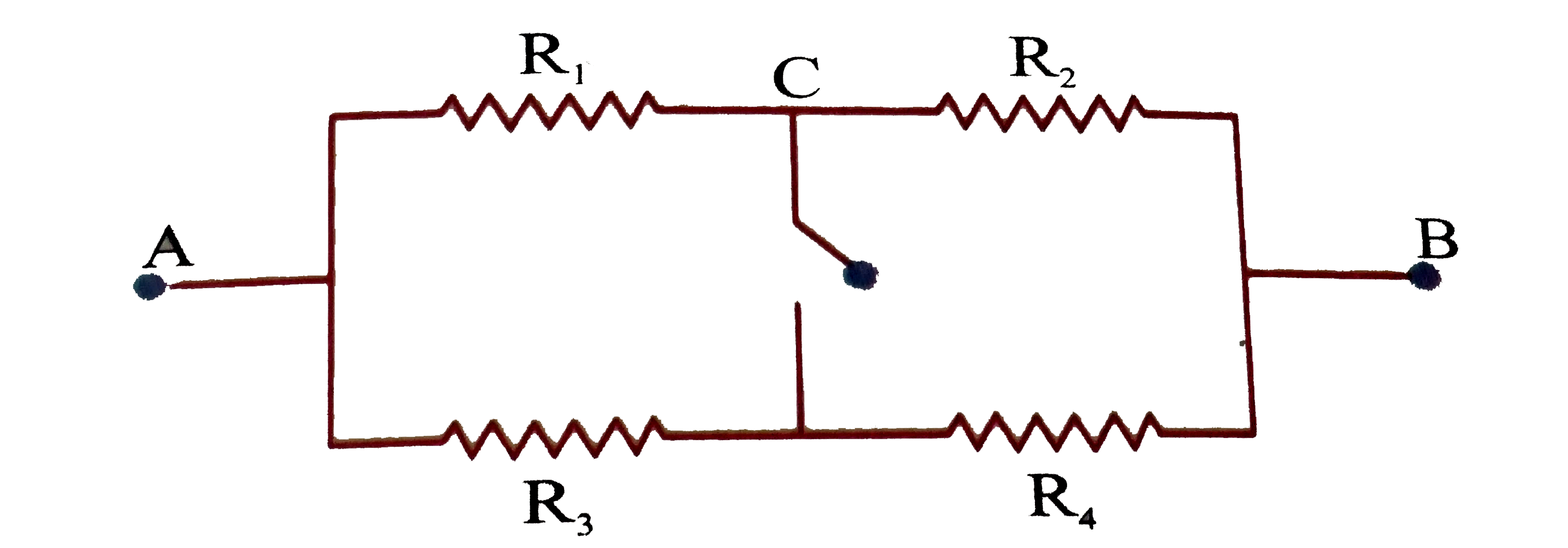
Four resistors R1,R2,R3 and R4 are connected between two terminals A and B iin a network as shown in the diagram. A key K can connect the two points (see diagram) C and D. A constant potential difference (VA−VB)=V is maintained between thhe points A and B
Q. If V=25,R1=1Ω,R2=2Ω,R3=3Ω and R4=4Ω the current that will flow from C to D on connecting key K is
A
zero
B
infinity
C
+1A
D
−1A
Video Solution
Text Solution
The correct Answer is:C
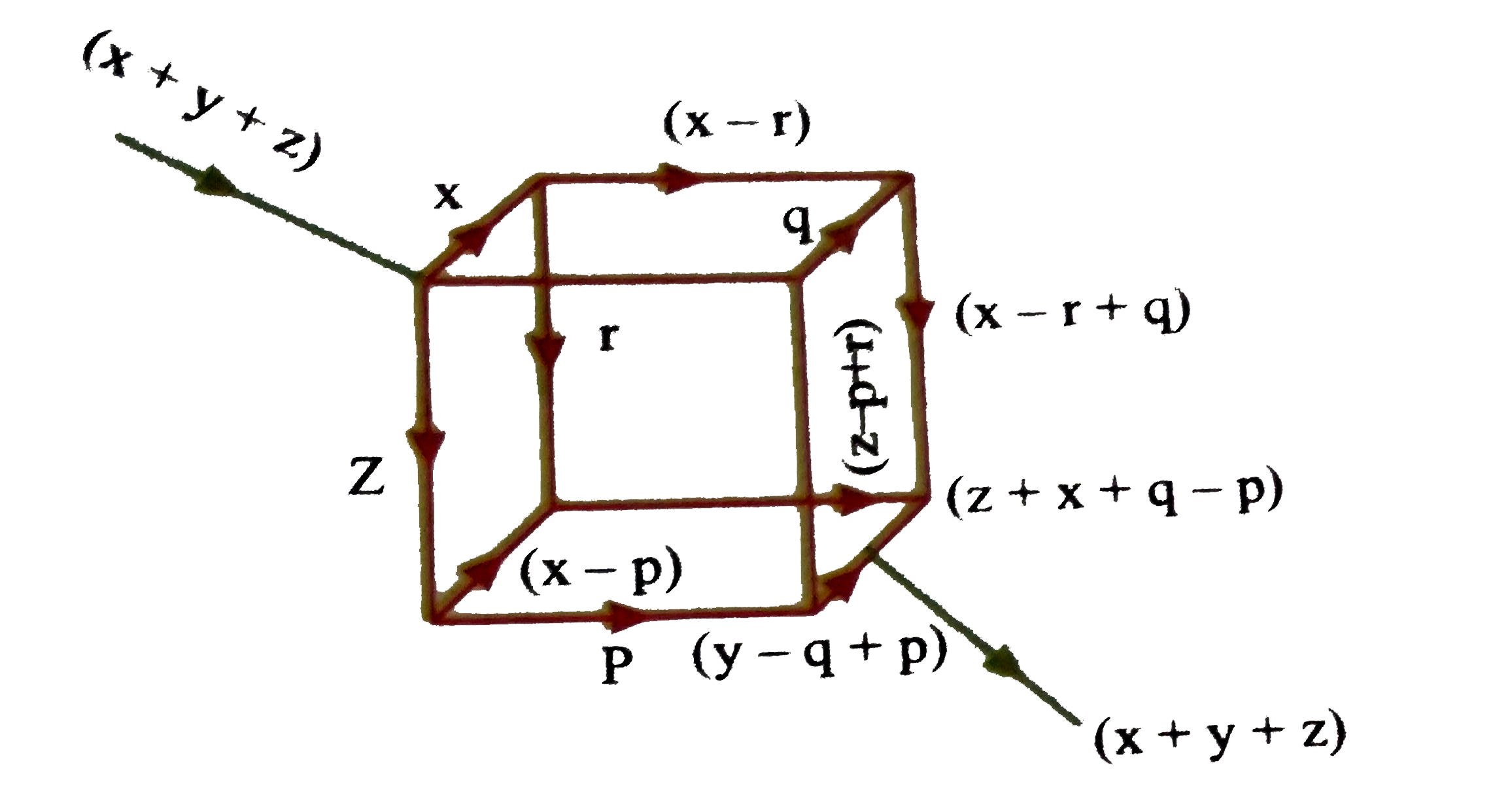
Ry+R(y−q)−RP−RZ=0 (or)
2y−Z=p+q ..(i)
Rx+Rr−R(z−p)−RZ=0 (or)
2z−x=r+P .(ii)
Ry+Rq−R(x−R)−Rx=0 (or)
2x−y=q+r ..(iii)
Therefore 2p=3y+z−3x ..(iv)
2q=3x+y−3z ..(v)
2r=3z+x−3y ..(vi)
Again (x−r)+(x−r+q)=r+(z−p+r)
(or) 2x−z=4r−p−q ..(vii)
substituting values of p,q,r, we find z=y ..(viii)
again
=(z−p)+(z−p+r)+K(z+x+q−p)
=p+(1−K)(y−q+p)
this gives K(2y+x)+8(x−y)=0 (or)
V=R[x+(x−r)+(x−r+q)+K(z+x+q−p)]
V=R[7x−2y2+2K(2x−)] ..(10)
I=x+2y ..(11)
Vi=Req=R[(7x−2y)+4K(2x−y)2(x+2y)]
=R12[10+4K−5K2]
R is maximum when K=25 and Rmax=9R10
|
Topper's Solved these Questions
- CURRENT ELECTRICITYBook:NARAYNAChapter:CURRENT ELECTRICITYExercise:Level 5
Explore 42 Videos
- COMMUNICATION SYSTEMBook:NARAYNAChapter:COMMUNICATION SYSTEMExercise:Level-II(H.W)
Explore 25 Videos
- DUAL NATURE OF RADIATION AND MATTERBook:NARAYNAChapter:DUAL NATURE OF RADIATION AND MATTERExercise:ASSERTION AND REASON
Explore 15 Videos
Similar Questions
Knowledge Check

Four resistors R1,R2,R3 and R4 are connected between two terminals A and B iin a network as shown in the diagram. A key K can connect the two points (see diagram) C and D. A constant potential difference (VA−VB)=V is maintained between thhe points A and B
Q. If R1=R4=1Ω and R2=R3=2Ω, the effective resistance between the terminals A and B will change, on closing the key K, byAan increase of 0.5ΩBa decrease of 0.16ΩCan increase of 0.16ΩDa decrease of 0.5Ω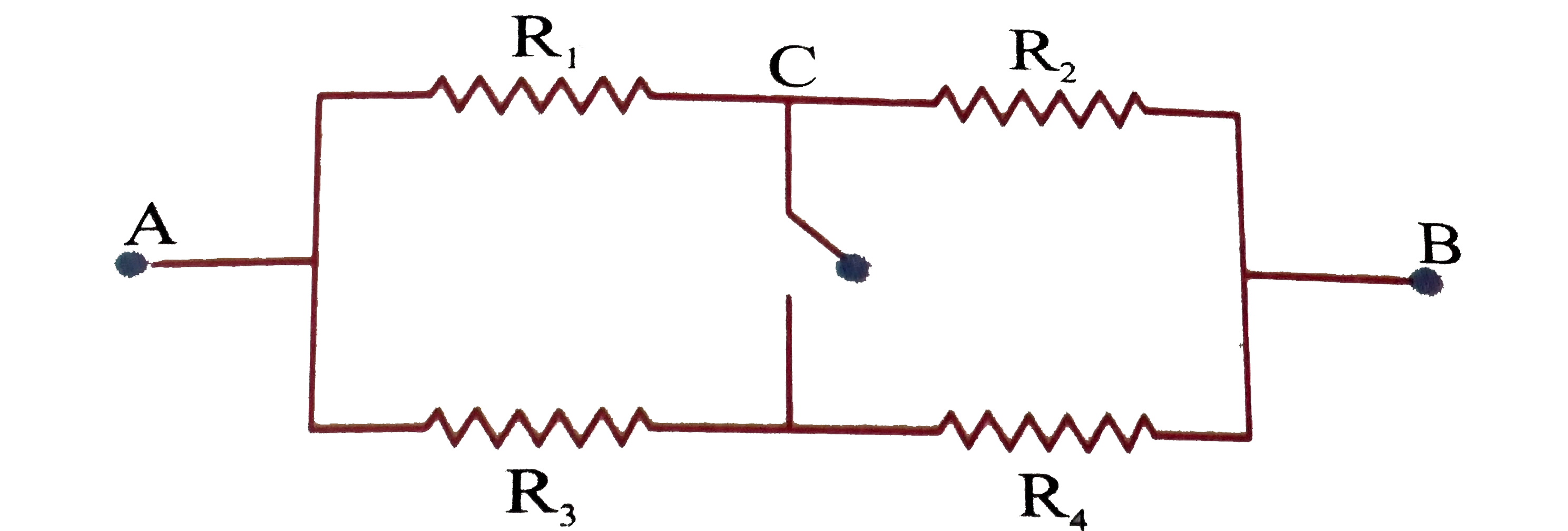
Four resistors R1,R2,R3 and R4 are connected between two terminals A and B iin a network as shown in the diagram. A key K can connect the two points (see diagram) C and D. A constant potential difference (VA−VB)=V is maintained between thhe points A and B
Q. In on connecting the key K, no current flows through the segment CD, whatever potential difference V exists between A and B which of the following cases will satisfy this condition?AR1=1Ω,R2=2Ω,R3=3Ω,R4=4ΩBR1=2Ω,R2=1Ω,R3=4Ω,R4=2ΩCR1=1Ω,R2=2Ω,R3=2Ω,R4=1ΩDR1=R2=2Ω,R3=2R4=4ΩThe potential difference in volt across the resistance R3 in the circuit shown in figure, is (R1=15Ω,R2=15Ω,R3=30Ω,R4=35Ω)
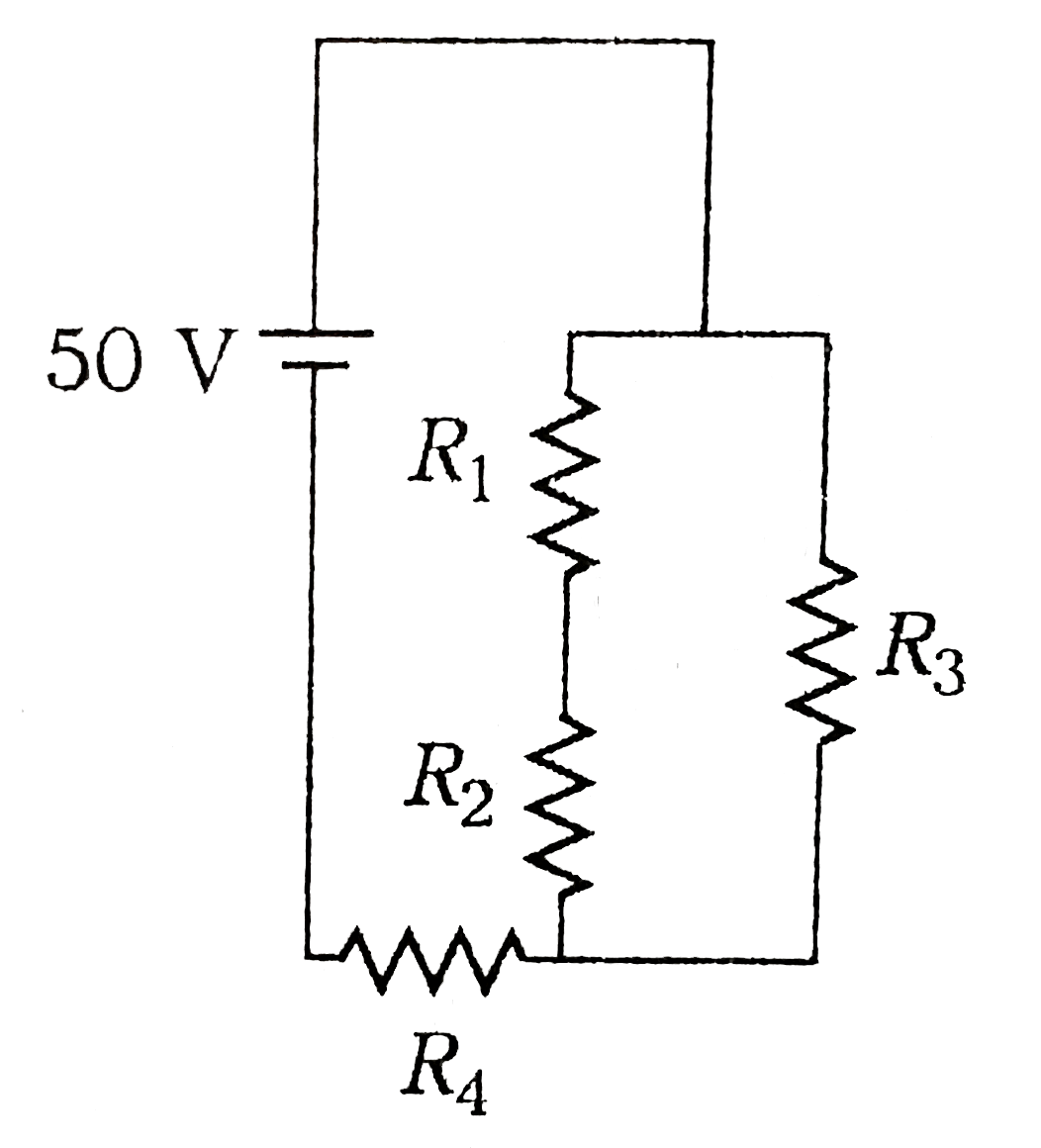 A5B7.5C15D12.5
A5B7.5C15D12.5
Determine the voltage drop across the resistance R1 in the circuit given in Fig. 4.55 with ε=90V,R1=5kΩ,R2=5kΩ,R3=10kΩ and R4=10kΩ.
View SolutionIn the given circuit, E=8V,R1=1Ω,R2=R3=R4=5Ω.The current through the resistance R4 is (in A):

View SolutionIn the circuit shown below E1=4.0V,R1=2Ω,E2=6.0V,R2=4Ω and R3=2Ω. The current I1 is
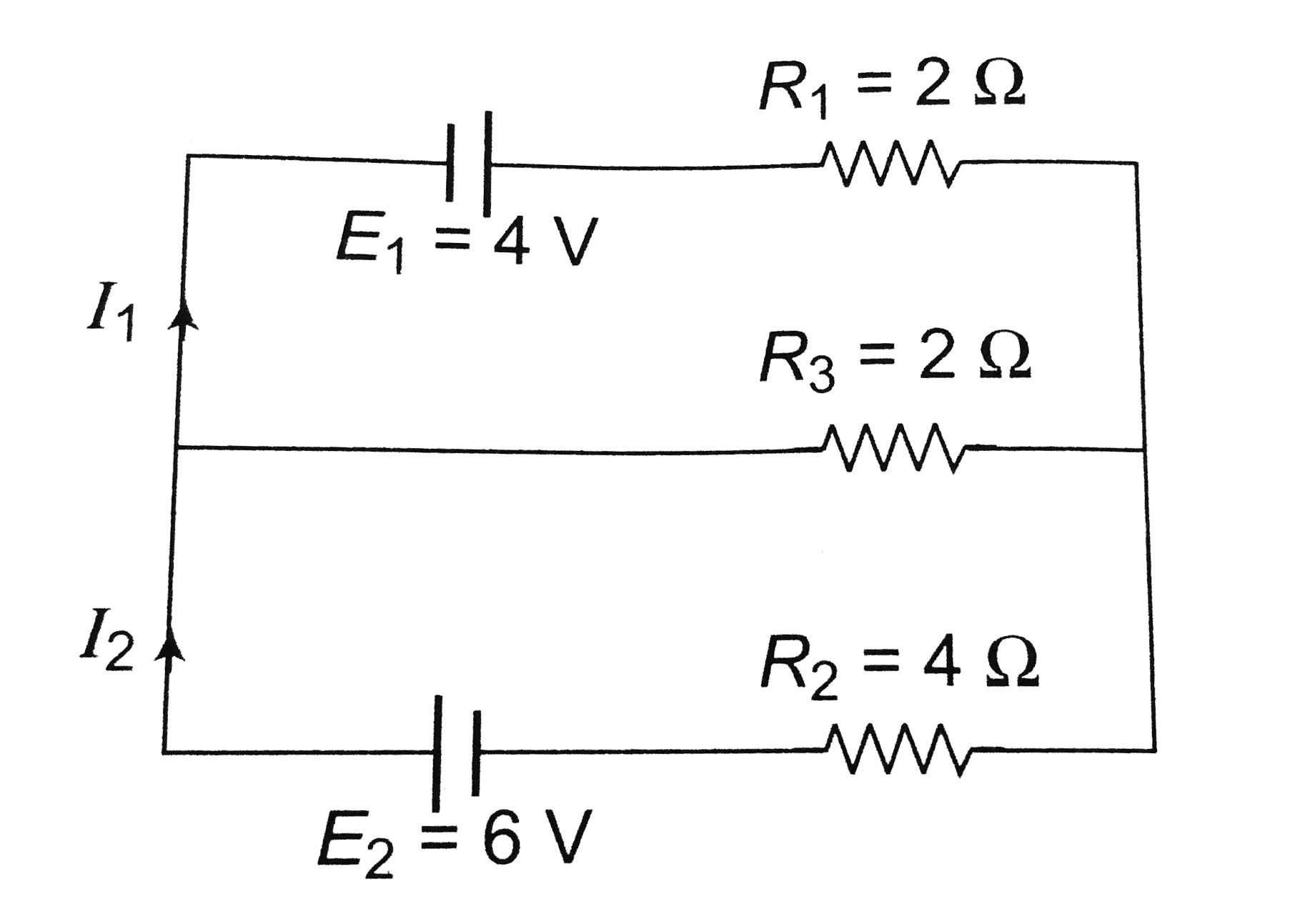
View SolutionIn the given figure, E=12V, R1=3Ω,R2=2Ω and r=1Ω. The choose the correct option/s
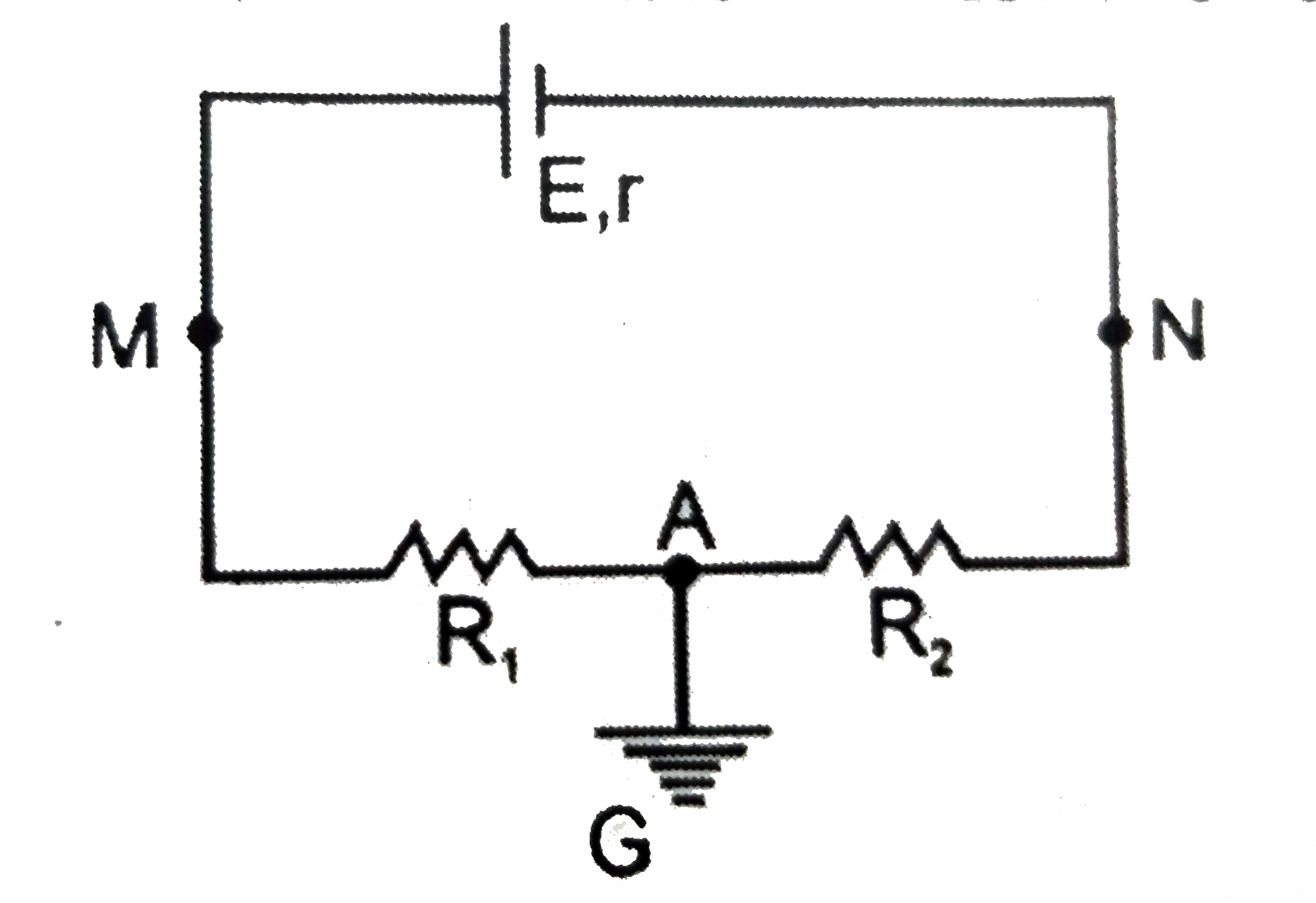
View SolutionTwo batteries of emf 4 V and 8 V with internal resistances 1Ω and 2Ω are connected in a circuit with a resistance of 9Ω as shown in figure. The current and potential difference between the points P and Q are
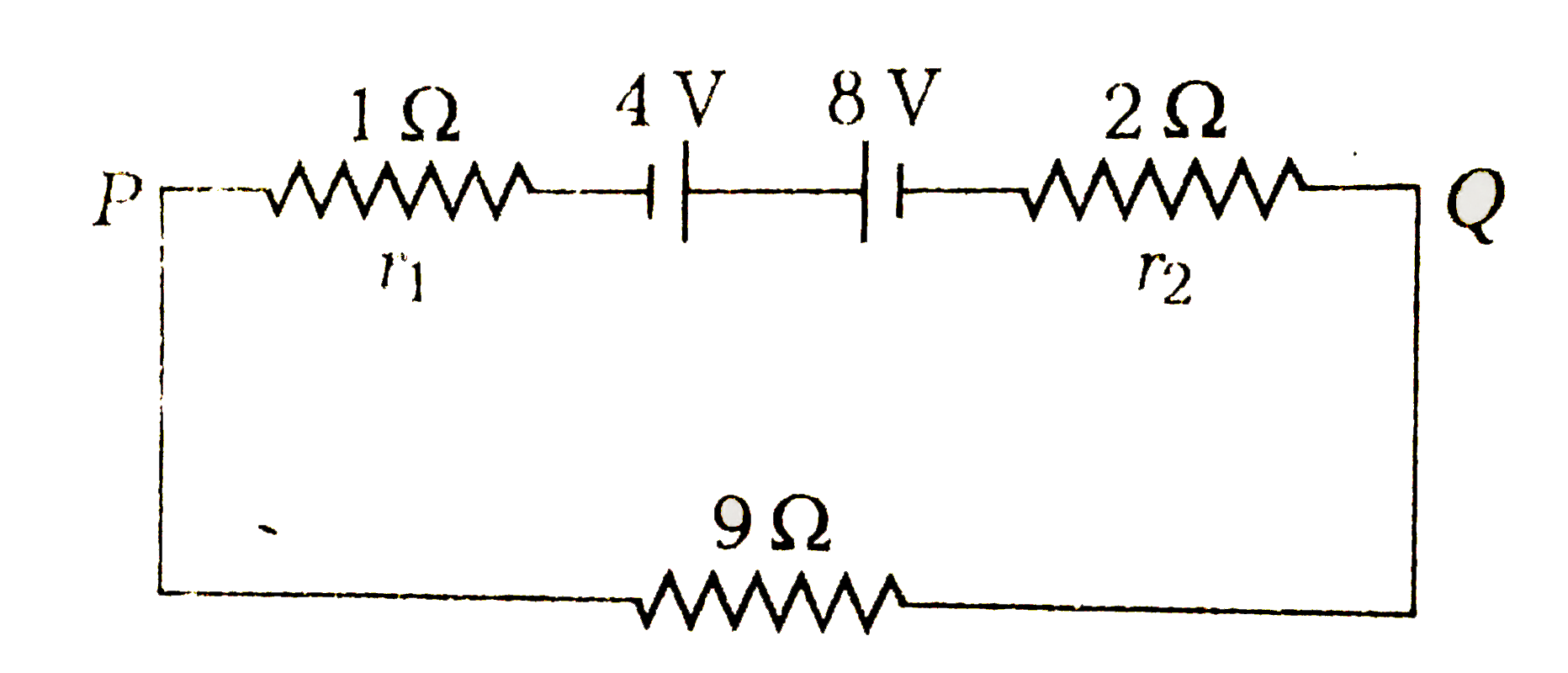
View Solution


